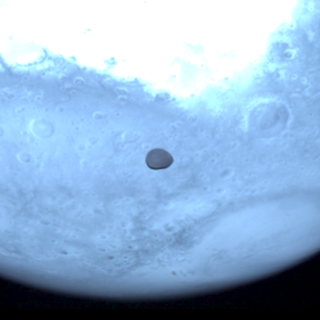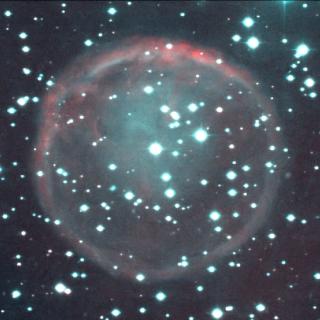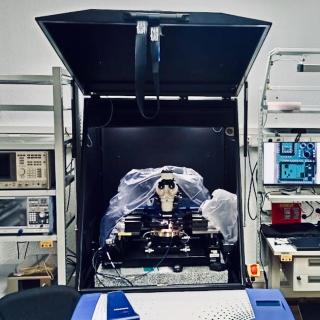It may interest you
-
 ESA’s Hera mission for planetary defense performed a flyby of Mars, as part of its gravitational assistance manoeuvre to shorten its journey to the binary asteroid system Didymos. During the flyby, the spacecraft came around 5000 km from the surface of Mars, having also the opportunity to obtain images of its two moons, Deimos (during the approach) and Phobos (when departing Mars). Julia de León, Javier Licandro, and George Prodan, researchers at the Instituto de Astrofísica de Canarias, participate in this mission, successfully launched from Cape Cañaveral, Florida (USA) on October 7, 2024Advertised on
ESA’s Hera mission for planetary defense performed a flyby of Mars, as part of its gravitational assistance manoeuvre to shorten its journey to the binary asteroid system Didymos. During the flyby, the spacecraft came around 5000 km from the surface of Mars, having also the opportunity to obtain images of its two moons, Deimos (during the approach) and Phobos (when departing Mars). Julia de León, Javier Licandro, and George Prodan, researchers at the Instituto de Astrofísica de Canarias, participate in this mission, successfully launched from Cape Cañaveral, Florida (USA) on October 7, 2024Advertised on -
 An international team of researchers, including staff from the Instituto de Astrofísica de Canarias (IAC), has discovered a planetary nebula that destroyed its own planetary system, conserving the remaining fragments in the form of dust orbiting its central star. To date, more than 5000 exoplanets have been discovered orbiting stars of all kinds and almost every stage of stellar evolution. However, while exoplanets have been discovered around white dwarfs – the final stage in the evolution of low- and intermediate-mass stars like the Sun, no exoplanets have been detected in the previousAdvertised on
An international team of researchers, including staff from the Instituto de Astrofísica de Canarias (IAC), has discovered a planetary nebula that destroyed its own planetary system, conserving the remaining fragments in the form of dust orbiting its central star. To date, more than 5000 exoplanets have been discovered orbiting stars of all kinds and almost every stage of stellar evolution. However, while exoplanets have been discovered around white dwarfs – the final stage in the evolution of low- and intermediate-mass stars like the Sun, no exoplanets have been detected in the previousAdvertised on -
 The Instituto de Astrofísica de Canarias has put itself on the frontier of astrophysical technology by developing the first integrated photonic circuit designed entirely within the Institute. This pioneering advance will permit the improvement of astronomical instruments, and the development of innovative systems for observing the universe. Astrophysical instrumentation, for both ground-based and space-based use is so specialized that often comercial systems and subsystems do not come up to the required specifications, This makes it necessary to buy high priced components or to delegateAdvertised on
The Instituto de Astrofísica de Canarias has put itself on the frontier of astrophysical technology by developing the first integrated photonic circuit designed entirely within the Institute. This pioneering advance will permit the improvement of astronomical instruments, and the development of innovative systems for observing the universe. Astrophysical instrumentation, for both ground-based and space-based use is so specialized that often comercial systems and subsystems do not come up to the required specifications, This makes it necessary to buy high priced components or to delegateAdvertised on